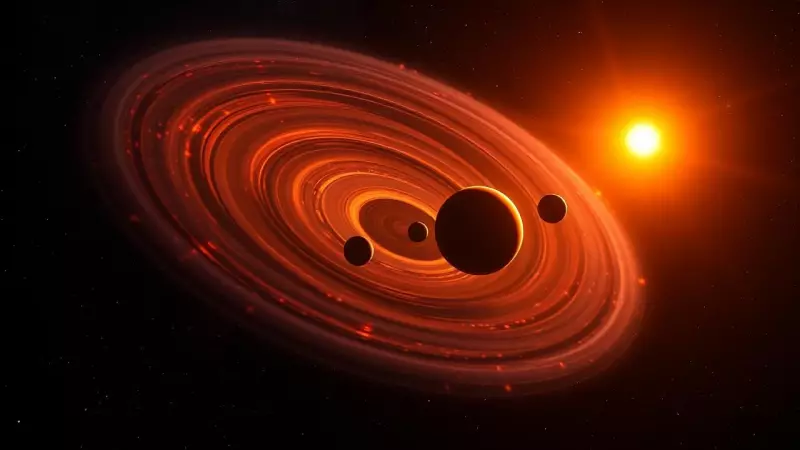
In a remarkable astronomical breakthrough that reads like science fiction, scientists have uncovered three Earth-sized planets orbiting a pair of twin stars—marking the first-ever discovery of transiting worlds in a binary star system. This extraordinary finding challenges our understanding of planetary formation and expands the possibilities for habitable worlds beyond our solar system.
The Binary Star Wonder
The system, known as TOI-1338, features two stars locked in a cosmic dance, with one star being slightly larger than our Sun and the other a smaller, cooler red dwarf. What makes this discovery particularly significant is that all three planets pass directly between the stars and our line of sight—a phenomenon known as transiting that allows scientists to study their atmospheres and compositions in unprecedented detail.
Three Promising Worlds
The three newly discovered planets range in size from rocky Earth-like worlds to potentially water-rich super-Earths. While their orbital periods vary from days to weeks, all three exist within what astronomers call the "habitable zone"—the region where temperatures could allow liquid water to exist on their surfaces.
Key characteristics of the discovery:
- First confirmed transiting planets in a binary star system
- All three planets are Earth-sized or slightly larger
- Planets orbit both stars in a "circumbinary" configuration
- System located approximately 1,300 light-years from Earth
- Discovery made using NASA's TESS spacecraft data
Why This Discovery Matters
This finding is particularly significant because binary star systems are actually more common in our galaxy than single-star systems like our own. The discovery that such systems can host Earth-like planets dramatically increases the number of potential habitats for life in the universe.
Dr. Veselin Kostov, the lead researcher on the project, emphasized the importance: "This discovery proves that Earth-sized planets can form and persist in the complex gravitational environment of binary stars. It opens up an entirely new category of worlds for us to explore in our search for life beyond Earth."
Future Research Opportunities
The transiting nature of these planets makes them ideal candidates for further study with next-generation telescopes like the James Webb Space Telescope. Scientists hope to analyze the chemical composition of their atmospheres, searching for biosignatures—chemical indicators that could suggest the presence of life.
This groundbreaking research, conducted by an international team of astronomers, not only expands our understanding of planetary systems but brings us one step closer to answering humanity's oldest question: Are we alone in the universe?
